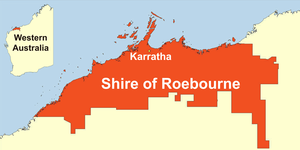Census Data - Beyond the Figures
We are currently in the midst of the Australian Bureau of Statistics’ release schedule of the 2011 Census of Population and Housing data. With a multitude of high quality, freely available, relatively recent demographic information at your fingertips, one could be forgiven for imagining enlisting consultancy services for this particular area would be redundant. However, with every information source comes caveats, limitations, and issues. Proper interpretation requires not only understanding the intended use of the information, but also a strong understanding of Census data itself. As Consultant Statisticians experienced in the use of Census and other demographic data, Data Analysis Australia bridges these two understandings, providing tailored information selection and advice to suit particular needs.
A recent and illustrative example relates to a set of community profiles created to enable Horizon Power (Western Australia’s regional and remote electricity provider) to better understand their customers. In the instance of Census data for the Shire of Roebourne alone – a large Shire in the Pilbara region of northern Western Australia, including the township of Karratha, a major hub for the resource industry - there are many a minefield awaiting the unsuspecting user.
Census population counts come in three standard forms a count by place of usual residence, a count by place of enumeration (location on Census night itself), and a count by place of employment. Place of employment counts are limited in availability by difficulties in geocoding to small geographic regions, and were not utilised in the development of the community profiles as they were available for so few of Horizon Power’s supply regions.

So which count is appropriate? Karratha is a region with a high number of fly-in, fly-out (FIFO) workers. There is a known difficulty with having a single usual residence question in the Census, in that these workers are free to select their one and only place of usual residence as their private home, as opposed to Karratha. What’s the problem with that, you ask? The place of usual residence is defined on the Census form as “that address at which the person has lived or intends to live for a total of six months or more in 2011”. Any FIFO worker with a roster including more than half of their time being “on” in theory should have indicated Karratha as their place of usual residence. However, human intuition associates “residence” with “home”, and so the problem develops.
For the Horizon Power profiles, both population counts for the Shire of Roebourne by place of usual residence (22,900) and location on Census night (29,608) were presented, along with age and gender profiles. For Horizon Power, both types of counts were useful in different ways. Counts by location are better suited for analysis regarding per capita power usage, whereas counts by usual residence are better for analysis regarding likelihood to invest in efficient energy schemes, such as solar panels. With nearly 30% difference between the two, it’s crucial that this issue is understood.
Another interesting consideration with the Shire of Roebourne was the median rent of $120 per week. Sound a little low? This median is based on all rented and occupied dwellings, and includes over 2,000 (59% of all rentals) that are classified as “Other landlord type”, which includes dwellings being rented through an employer. Over half of these landlord types have a rent range of $0-74 per week. It is clear that, rather than giving the actual rent paid by their employer, renters (probably FIFO workers) are stating their own share of the rent - $0. This has produced a highly skewed median for rental prices. It may be perfectly acceptable for use when determining the disposable income of individuals or even for median rents in most circumstances, but not so within the frame of a rental market assessment in this particular situation. As an aside, the median rent for dwellings rented directly via a real estate agent is in the $650 and over category – the highest category provided in the Shire of Roebourne’s basic community profile from the ABS. Using the Regional Rental Data search engine on the Real Estate Institute of Western Australia’s website, it gives a median rent for houses in the suburb of Karratha at a cool $1,600 for the July-September 2011 quarter.
Over 35 profiles were created for Horizon Power, including 2006 Census fields for direct growth comparison. Data Analysis Australia has the Census data expertise and the real-world project experience required to design tailored community profiles. Whilst some consideration is necessary to determine the most appropriate Census fields and information to present, these can then be produced over various regions in a systematic fashion, providing the right strategic information in a consistent, customised and quality assured format.
For further information on how Data Analysis Australia uses Census data, please Contact Us.
March 2013
